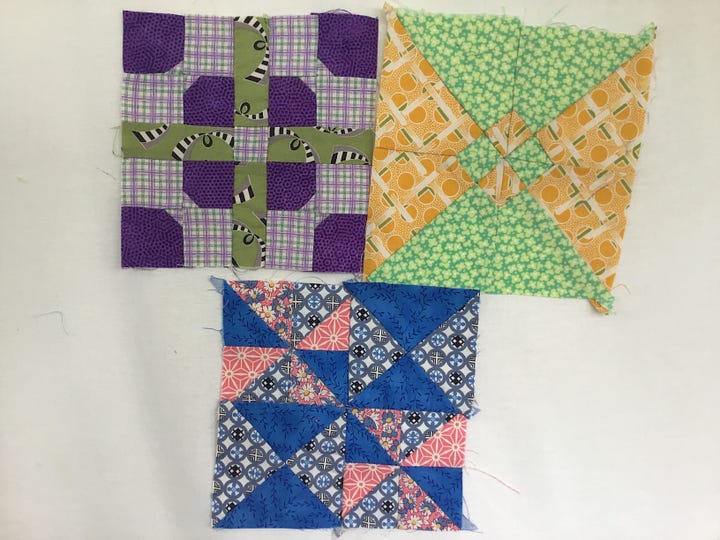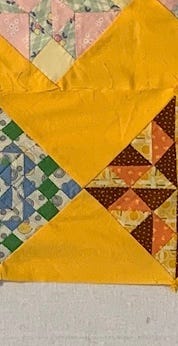I have always been attracted to rivers. I really don’t know why but being around a river with the large echoing water sounds and the little tiny sounds of the river fish, animals, and insects entrance me. It’s not really a relaxing feeling, though it can be at times, but it is also interesting to both observe what is going on in the habitats and listen to the sounds that emanate from a river’s existence. And the smells, I forgot about the smells. The dank, rotting smell of vegetation but also the clear, clean smell of the water splashing around. Sitting by a river can keep me entertained for hours.
(I just realized that maybe this fascination with rivers came from reading “On the Banks of Plum Creek” by Laura Ingalls Wilder at an impressionable age. It was one of my favorite books.)
What has this got to do with the Joy of Handwork? Well I ran across something on the internet recently about the combination of flow and crafts. If you don’t know what flow is, I grabbed a description from Wikipedia that said it is a feeling one gets when “a person performing some activity is fully immersed in a feeling of energized focus, full involvement, and enjoyment in the process of the activity. In essence, flow is characterized by the complete absorption in what one does, and a resulting transformation in one's sense of time.”
Flow does exist in handwork and I think it is one of the best feelings you can get.
But what stood out to me in this Wikipedia entry was the reference further down in the etymology section that said “people described their "flow" experiences using the metaphor of a water current carrying them along”. Maybe that was what I was looking for in my handwork sessions along with the heightened sense of your surroundings and the endless fascination in the outcome, very similar to my river experiences.
But my flow experiences in handwork also need another something added to it. It needs everything to go well and not get messed up. My stitches need to work nicely, the fabrics need to respond to my touch, the colors need to come out the way I envision them, and, this above all, I do not need to rip anything out and redo it.
I have a definite personality quirk, I refuse to rip out and restitch seams. I will do anything to avoid the seam ripper. If I make a mistake, I will redesign a quilt block, resize it, or change the whole concept of a quilt design just to avoid using the seam ripper. I will go so far as to change the color of sashings or borders just because I made a mistake and put a quilt block in the wrong place that causes an upset in the color scheme. How many times have I told myself “Self, this is not normal. Everyone makes mistakes and rips out seams or stitches. Just do it!” But I can’t. Not matter how hard I try, I can’t.
If you take a look at the above photo, did you see the purple cross block on the lower right? The block is set upside down and I didn’t notice it until I had sewn the rows together. So do you think I got out the seam ripper? Ha! I turned the whole thing around so the cross is on the top and redesigned the block setting of the next row.
To attain the flow experience, there must be no mistakes, or at least tolerable ones. Some mistakes even add to the flow. If my Sashiko stitches are uneven, that’s okay because it gives the project a rustic appearance and the uneven look that is characteristic of handwork. If my embroidery doesn’t really follow the pattern, I make sure the lines will wash out and no one will be the wiser. Also, it could give a better visual impact, at least that’s what I tell myself. But if a seam is crooked I won’t change it and I hope that a good press with my steam iron and a couple of whacks with the clapper will hide it because I can’t spend a few minutes to rip it out and redo it. And if I put a block in the wrong place, well just see the options available in the above paragraph to cover it up.
Now I am self aware enough to understand that it is hard for me to admit to mistakes and that is part of the reason I am so adverse to using the seam ripper. But at my age I also realize that covering up so-called mistakes is part of my creative make up and this quirk might just become part of my individual design principles and I should just embrace it, not ignore it. So it you see a block that is turned the wrong way or a series of triangles missing their points, that is the true person peaking through the quilt.







I enjoyed reading your post; I've also been paying attention to the concept of flow. I don't experience it when I'm doing handwork (knitting), but I am deep in a flow state when I write. When writing, that flow includes the revision process too. LIke you, though, I don't like to rep back my knitting.
I love your confidence! It's the confidence of an artist who knows she has a practice that works to create beautiful results.